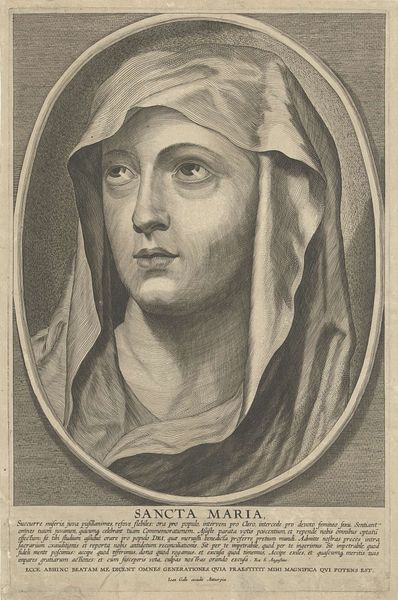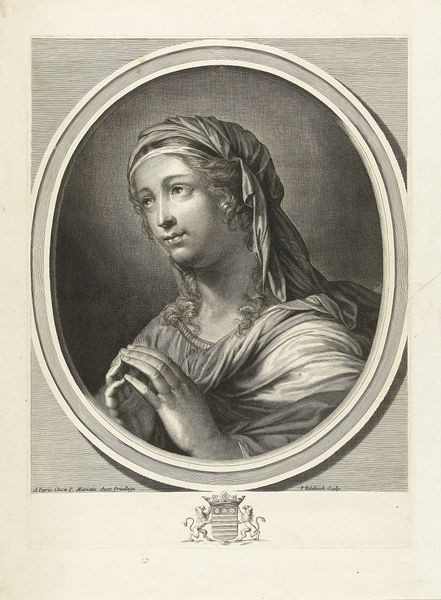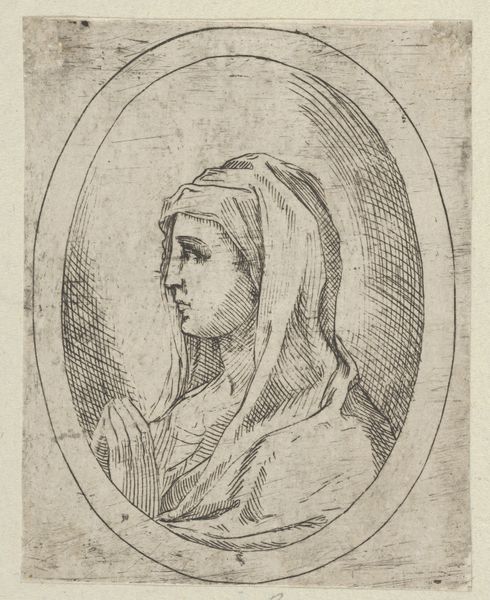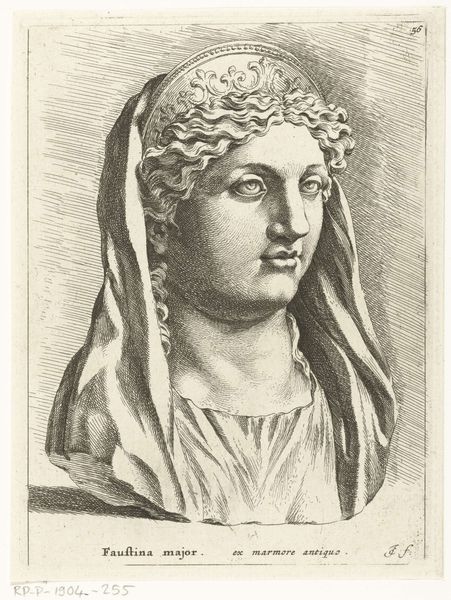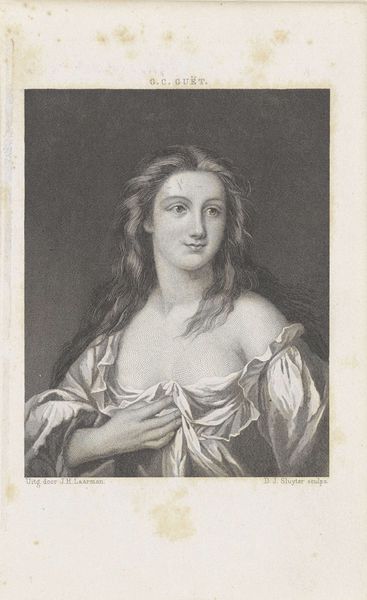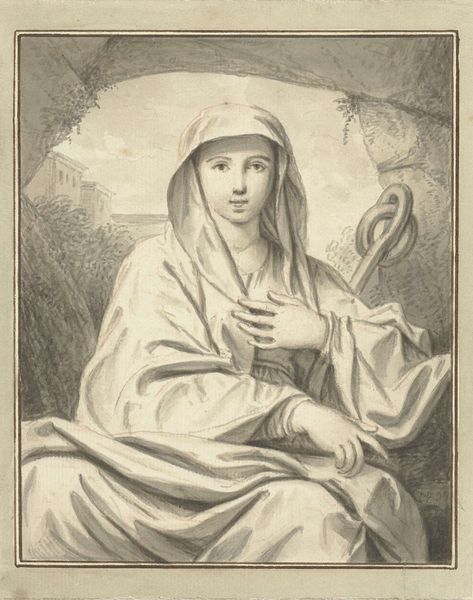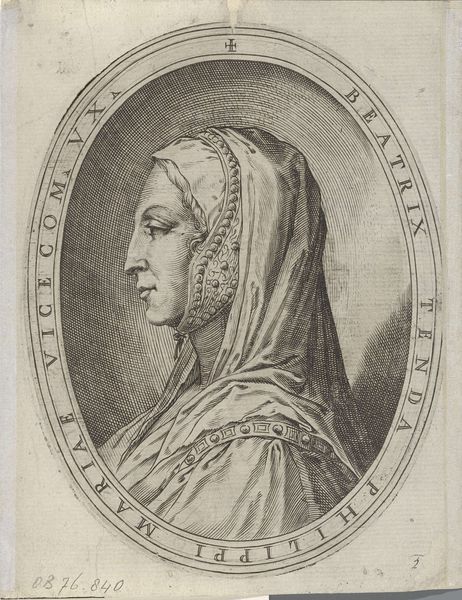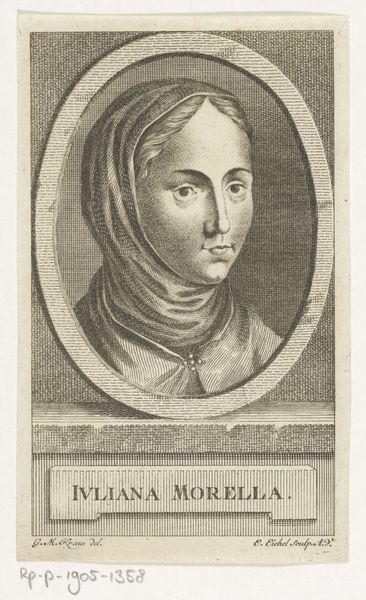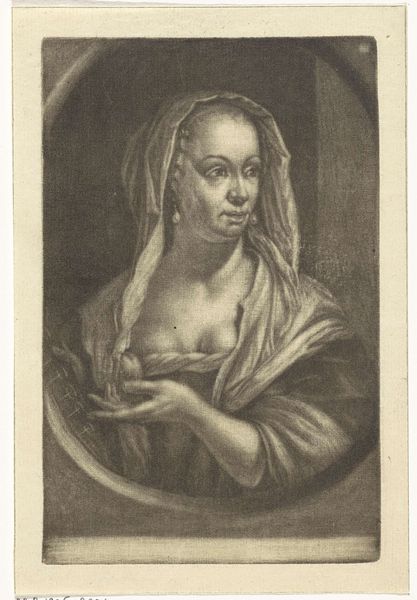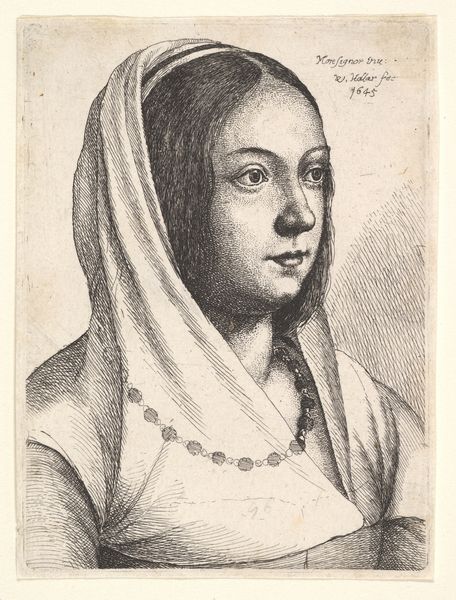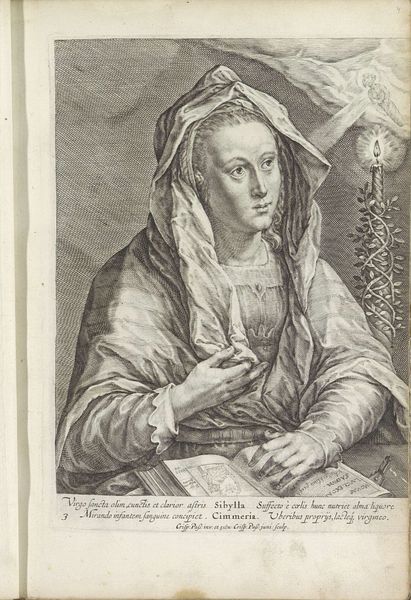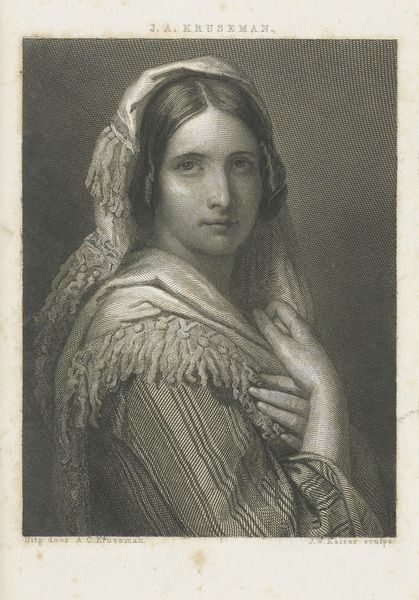
drawing, engraving
#
portrait
#
drawing
#
baroque
#
portrait image
#
charcoal drawing
#
portrait drawing
#
engraving
#
realism
Dimensions: height 350 mm, width 250 mm
Copyright: Rijks Museum: Open Domain
Curator: "Maria," a striking engraving housed here at the Rijksmuseum. It’s attributed to Jan van Troyen, created sometime between 1620 and 1675. Editor: My first thought is how somber the image is. The textures are delicate but contribute to the serious mood, especially her focused expression. There's a stark elegance. Curator: I find the "Mater Amabilis" inscription so revealing. It casts the portrait within a specific religious and cultural framework—the loving mother, an immensely popular archetype during the Baroque era, particularly used by the Counter-Reformation movement. It reinforced societal expectations around women, piety, and motherhood. Editor: Right, and stylistically, notice how Troyen renders the sheer veil. The artist uses tightly-knit engraved lines to create this amazing effect of depth and volume. I am amazed that we're able to see that level of nuanced rendering. Curator: Absolutely. Printmaking served as an invaluable tool to broadly distribute images. Troyen was actively participating in, and shaping, visual culture and accessibility for an expanding audience of consumers during his lifetime. Who got to see the original and who engaged with prints is an intriguing socio-political dynamic to consider. Editor: I can see that. Considering it purely formally, though, look at how the oval format constrains, yet focuses, the viewer’s attention. This shape reinforces a sense of containment, of intimate study. Curator: The frame absolutely isolates the subject, elevating the individual as almost an object of devotion for the early modern public. This was something many workshops of printmakers replicated to give the sitters or portrayed figure the air of elevated importance. Editor: Yes. Though that could have a technical motivation. Restricting focus to her bust rather than including hands, more of the body, or other potentially distracting elements also enhances the image's efficiency; maximizing detail on her face—the real center of interest here. Curator: It speaks to how artists shaped and promoted certain idealized types of femininity for their audiences. I'm reminded of the limited roles deemed appropriate for women in public discourse at this historical juncture. Editor: Agreed. What makes this piece special for me is in the engraving process, in which light and shadow are meticulously structured to achieve an overwhelming sense of seriousness. Curator: It serves as a somber reflection, then, on the role and the projected persona of early modern womanhood. Editor: A testament to Troyen's delicate skills.
Comments
No comments
Be the first to comment and join the conversation on the ultimate creative platform.
